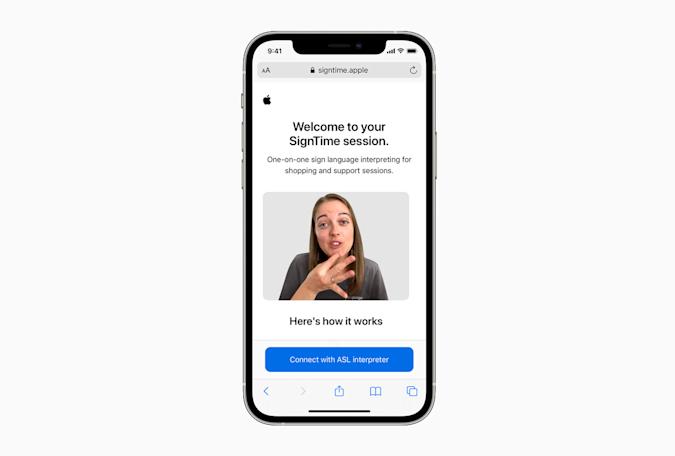Today, Apple has announced a range of features and services designed for people with mobility, vision, hearing, and cognitive disabilities. Technology needs to start doing more to meet the needs of all users, not just those of the majority which why this new is welcome. Here’s what Apple is planning.
SignTime
From May 20th, when contacting the Apple Store and Apple Support, visitors will be able to make use of SignTime. This allows customers to communicate in using American Sign Language (ASL) in the US, British Sign Language (BSL) in the UK, or French Sign Language (LSF) in France, right in their web browsers. Customers visiting Apple Store locations can also use SignTime to remotely access a sign language interpreter without booking ahead of time. SignTime will initially launch in the US, UK, and France, with plans to expand to additional countries in the future.

AssistiveTouch for Apple Watch
Eye-Tracking Support for iPad
iPad OS will now gain additional support for third-party eye-tracking devices. This makes it possible for people to control iPad using just their eyes. Later this year, compatible MFi devices will track where a person is looking onscreen and the pointer will move to follow the person’s gaze, while extended eye contact performs an action, like a tap.
Explore Images with VoiceOver
Apple is also introducing new features for VoiceOver, their screen reader software. Building on recent updates that brought Image Descriptions to VoiceOver, users can now explore even more details about the people, text, table data, and other objects within images.
Users can navigate a photo of a receipt like a table: by row and column, complete with table headers. VoiceOver can also describe a person’s position along with other objects within images — so people can relive memories in detail, and with Markup, users can add their own image descriptions to personalise family photos.
Made for iPhone Hearing Aids and Audiogram Support
In a significant update to the MFi hearing devices program, Apple is adding support for new bi-directional hearing aids. The microphones in these new hearing aids enable those who are deaf or hard of hearing to have hands-free phone and FaceTime conversations. These will be available later this year.
Accessibility is a human right more companies need to follow Apple’s lead here.


